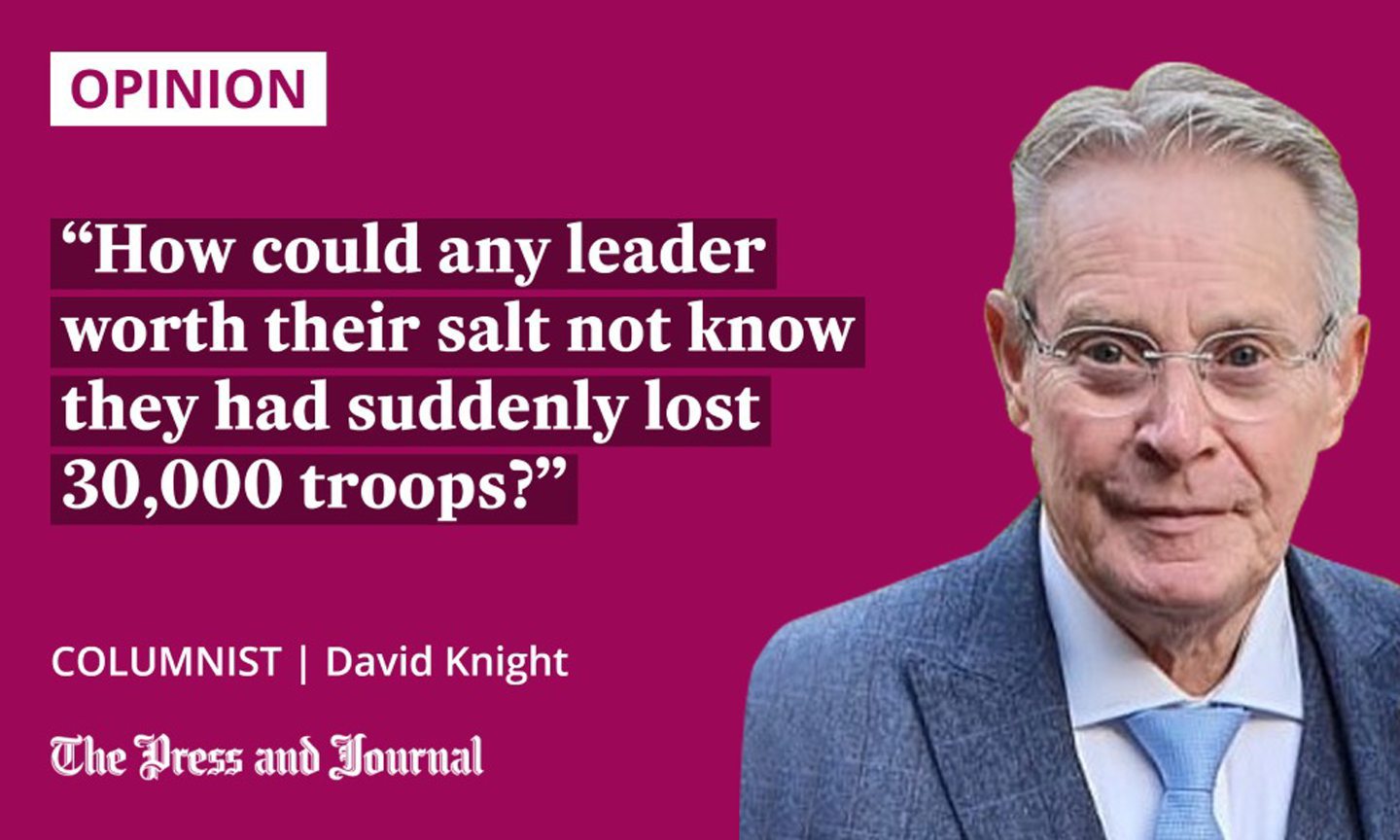The Durrells delighted us for years, through books and television about their adventures in Corfu after falling on hard times in Bournemouth.
It was an idyllic existence, if somewhat hand-to-mouth, on an island in the Ionian Sea in the late 1930s. But it all came crashing down as world war threatened to engulf them, and they fled back to Britain. So much for the Durrells.
The “Murrells” were also forced to evacuate their nice, comfortable surroundings due to war breaking out. Nicola Sturgeon and husband Peter Murrell, former SNP chief executive, abandoned ship as internal conflicts began tearing the party apart.
Bitter rivalries flushed out by nonsensical “de facto” referendum plans and disastrous gender recognition reform, followed closely by proposals for an economically-damaging bottle return deposit scheme.

As if the SNP faithful were not traumatised enough, the scandal of Murrell’s office appearing to fiddle membership figures, while misleading their own senior people and the public, exploded. And that’s before the outcome of a police SNP case.
It’s a miserable legacy, when you factor in failures in major domestic policies.
After he leaped overboard to avoid being made to walk the plank by his own mutinous crew, Murrell was lauded by some – as the SNP backroom boss who sustained electoral success over many years.
But did any of that make Scotland a better place? To live and work in – or send our kids to school, or go to hospital?
The whole sorry “mess”, as Murrell’s reluctant temporary replacement Michael Russell summed it up so accurately, is destroying the party’s credibility and existing structures. It could take a very long time for either to return.
It’s not going to be patched up – or go away – merely by selecting a new leader. None of the three will get an easy ride, and the infighting is likely to fester.
Rebuilding trust, democracy and integrity are now more important than independence
The old regimented, strictly-controlled SNP has been consigned to history. Who knows: they might be forced into another leadership election in a few months – just like the Tories with Truss and Sunak.
The integrity of the leadership race, which reaches a momentous climax for Scottish politics on March 27, must sit comfortably not only with SNP members and candidates, but also the public.
Given the extraordinary departure of Murrell, five days after polling began on March 13, would SNP members who cast their votes early now feel short-changed? Does the lack of trust created by party HQ leave them thinking they made a mistake?
It was no surprise that rumblings could be heard about a fresh leadership election to clear the air and get rid of an unpleasant odour.
Sturgeon was often accused of breaking a pledge to make the 2014 referendum a “once in a generation” event. Brexit, and Scotland’s shunning of it, was her Get Out of Jail Free card.
The Scottish Brexit vote was a clear rejection, but not clear proof of support for independence – as Sturgeon always unconvincingly tried to portray. Inconveniently for her, Brexit had little effect on boosting support for independence.
Ironically, Sturgeon’s departure and the resulting SNP civil war might have already pushed another referendum back a generation after all – or even two. Rebuilding trust, democracy and integrity are now far more important for the party, if it actually learns anything from this disaster, that is.
I live in hope, but I wouldn’t bank on it. I’d rather put my money in Credit Suisse. Ferrets in a sack don’t change their behaviour overnight.
And, to think, the SNP prided itself as being a cut above Sturgeon’s “hated” Tories.
A Wizard of Oz moment?
Interestingly, Kate Forbes and Ash Regan both spoke of restoring democratic principles as part of rehabilitating the SNP after Sturgeon and Murrell.
Democracy was one of the former first minister’s favourite words. The Tory government and the Supreme Court were accused regularly of anti-democratic attacks on Scotland, making its people “unequal partners” in the union.
But Sturgeon did a good job of maintaining a majority of unequal, unwilling partners in her own land when it came to promises of indyref2.
I watched incredulously as she played down the word “mess” and tried to pass off this embarrassing SNP farce as “growing pains”. Death throes, more likely, if the party is not careful.
Many figureheads over the years have come unstuck while pursuing ideological dreams
I laughed because Sturgeon reminded me of the Black Knight in Monty Python who, after both arms were chopped off, said: “It’s only a flesh wound.” And how could any leader worth their salt not know they had suddenly lost 30,000 troops?
Many figureheads over the years have come unstuck while pursuing ideological dreams, their imperfections exposed brutally as chinks appear in the curtain of power.
Like Dorothy demanding that the Wizard of Oz delivered on his grand but empty promises. In the classic film, the “fearsome” wizard hid away behind a curtain.
A weak and confused leader was exposed – or a “bumble”, as the strawman put it so memorably.
David Knight is the long-serving former deputy editor of The Press and Journal


Conversation